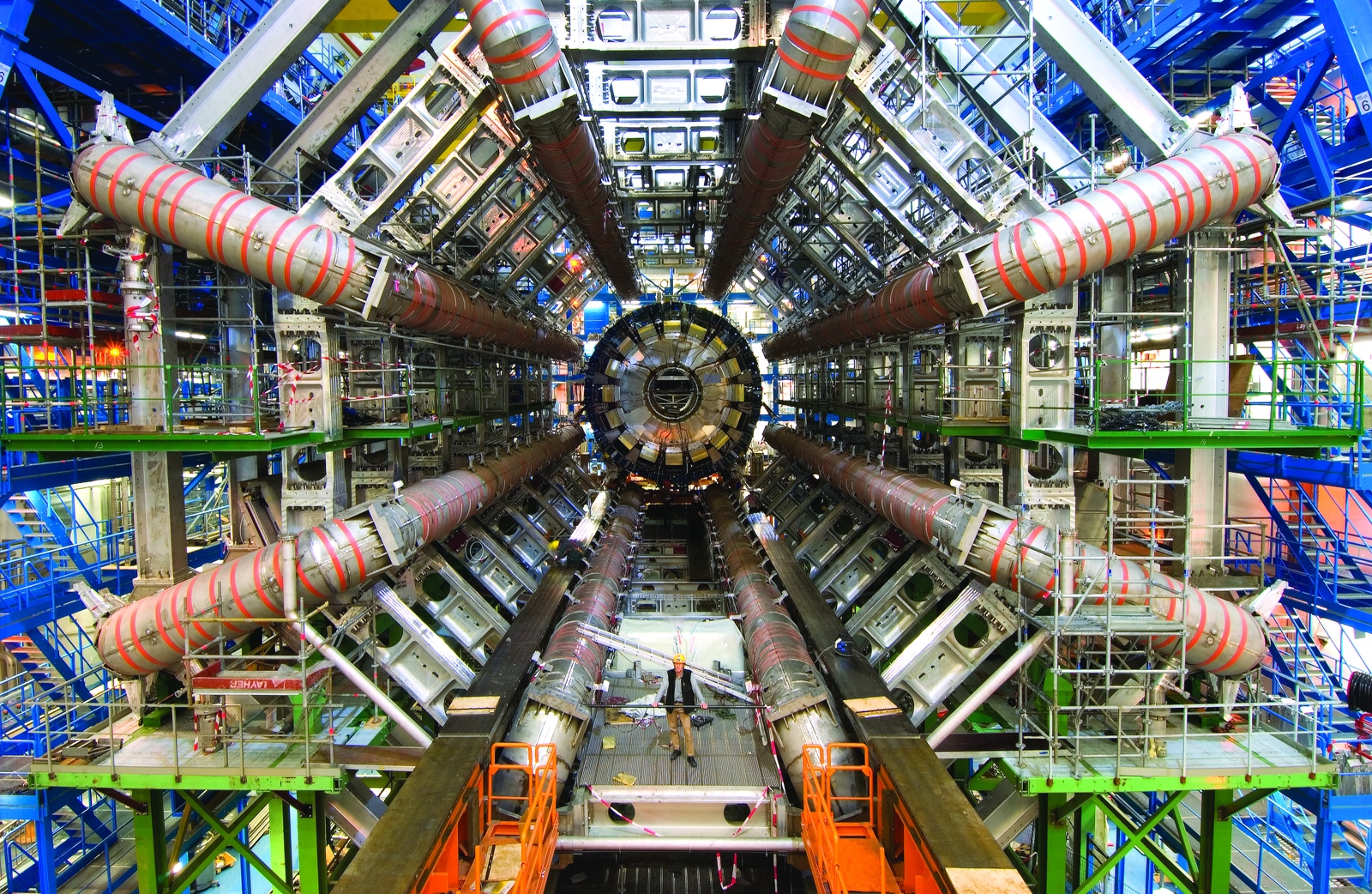
From providing the Full Picture of maritime technology to discovering the full picture about the existence of everything, Kongsberg Maritime visits CERN to see how the LHC plans to fling open the doors of understanding and shed light on the universe’s darkest secrets.
-
Text:Kongsberg Maritime Communication
Photo:Anna Pantelia
-
Gunvor Hatling MidtbøVice President, Communications
CERN: European Organization for Nuclear Research
Founded: 1954
Member states: 21
Annual budget (2014): CHF 1billion (c. EUR 970million)
Staff: 2,531 full time, 800 contractors, 587 fellows and apprentices and 11,726 ‘users’
Did you know? The World Wide Web was invented by Tim BernersLee, a British scientist at CERN, in 1989 with the purpose of sharing information between universities and institutes around the world.

Dr Christoph Schäfer CERN
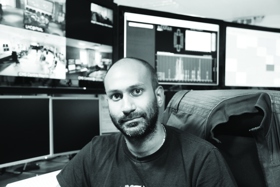
Dr Sudarshan Paramesvaran CERN
Did the earth move for you?
When the Big Bang is taking place directly beneath your feet, over and over again, you may expect to feel something. But at the headquarters of CERN, the European Organization for Nuclear Research, there isn’t even a ripple in the scientists’ coffee cups. It’s calm, controlled… and entirely deceptive. The 14,000 people who work here are well aware that reverberations will follow. And, when they do, they’ll have the power to deconstruct the universe.
THINK BIG
CERN’s somewhat nondescript facilities, near Geneva on the French-Swiss border, hide a colossal secret. Buried around 100m underneath them lies the world’s largest machine the Large Hadron Collider (LHC) particle accelerator. With a circumference of some 27km, a construction cost of EUR 6.5billion and an operating temperature of -271.3°C, colder than interstellar space, everything about the LHC inspires awe. Built over ten years, with the backing of CERN’s 21 member states, the collider is currently beginning its second run after a two year programme of upgrades. This will see it operate at full power for the first time, whipping beams of protons up to the speed of light using superconducting magnets, before smashing them head-on into one another with a force of 13 trillion electron volts (TeV). Or, to put that into perspective, enough energy to melt a tonne of copper on impact. The result is simply put, subterranean ‘Big Bangs’, which recreate the conditions experienced a trillionth of a second after the birth of the universe; unleashing miniscule fireballs, massive temperatures and a treasure trove of subatomic particles. Data on these is captured by four enormous particle detectors, using 150 million sensors, for a multinational team of scientists to sift through. Their goal? Finding the keys to unlock the universe. It’s an astonishing endeavour, on a unique scale. It simply doesn’t get any bigger than this.
BUT ... WHY?
Standing among CERN’s scattered buildings and army of engineers and physicists it’s easy to understand the scale of these experiments. The science itself is a little harder. That’s why The Full Picture is talking to Dr Christoph Schäfer, a veteran of some 20 years at the organisation. Schäfer, as with so many at CERN, arrived from his homeland (in his case Germany) on a temporary basis and ended up falling in love with a community and environment alive with a passion for discovery, where everyone, regardless of nationality, is fluent in “the language of science.” Thankfully for us, he opts for English to try and explain the LHC’s importance. “Every day we wake up here with the possibility of discovering something completely new or unexpected,” he states, adding, “That’s the beauty of fundamental research.” Fundamental research is different, Schäfer clarifies, from applied research, which is what usually occurs in industry. “With applied research you know the result, or at least what you want to achieve,” he notes, “such
as a more environmentally friendly car, a faster plane, a flatter TV set etc. That’s good for industry as it’s efficient, but you’re constrained by your imagination. “With fundamental research, the very essence of CERN, we do not know the result, we just have to observe. But while observing we can discover something that is beyond our imagination, something completely new. “That is the only way for mankind to take a big leap forward, to make discoveries and begin to really understand the full picture.”
LHC Hero Picture
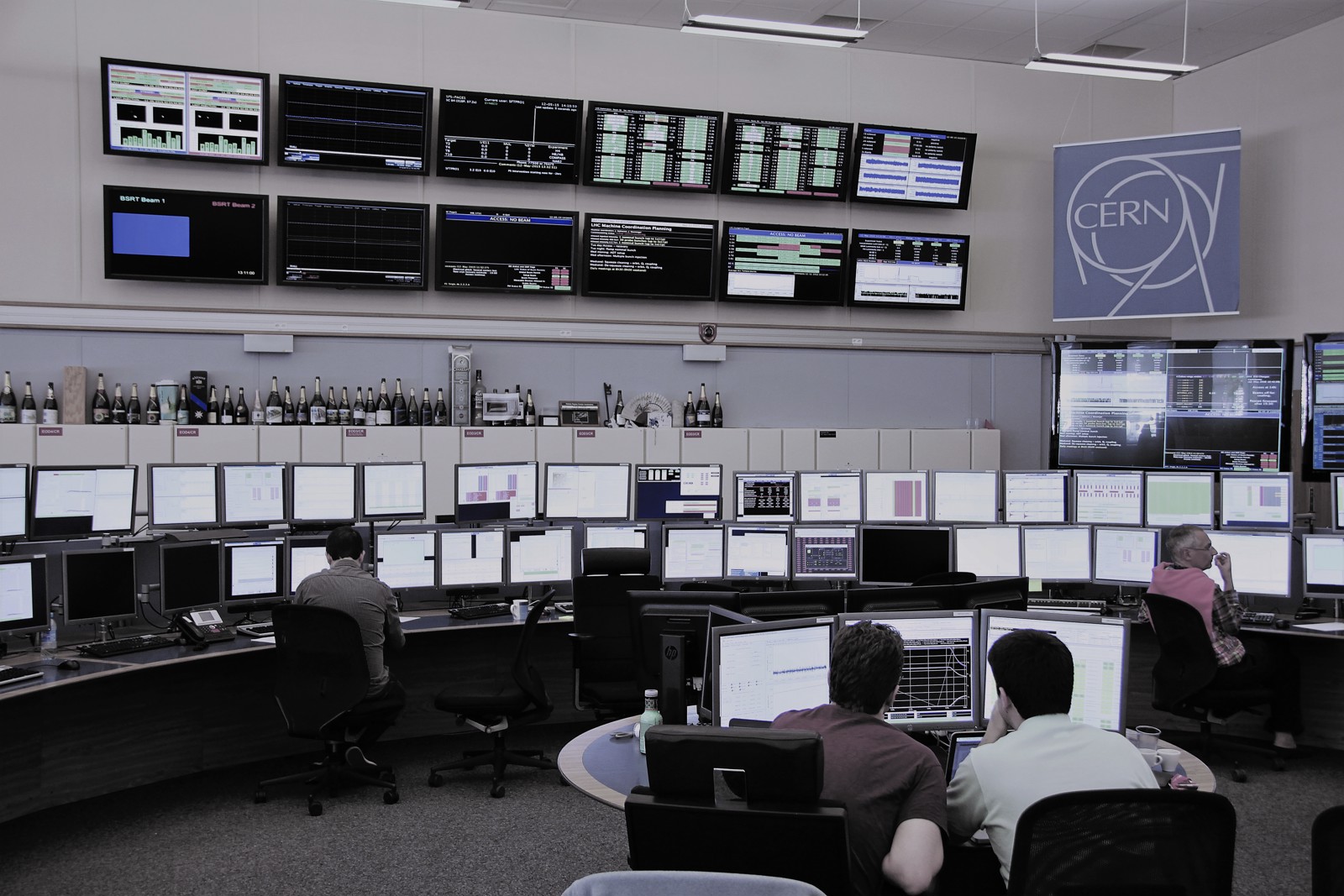
• What: The world’s largest and most powerful particle accelerator a 27km ring of superconducting magnets.
• Why: To unravel the universe and discover what it’s made of.
• Where: Buried at a mean depth of 100m below the ground on the Swiss-French border.
• Construction cost: c. EUR 6.5billion.
• Energy use: 120 MW, roughly the same as that of the combined households within the state (Canton) of Geneva.
• Start date: 10 September 2008.
• The second run: The first beams in the second run circulated the LHC on 5 April, the first low intensity collisions took place at the end of that month.
• Closure date: 2035.
• Experiments/particle detectors: ATLAS, CMS, ALICE, LHCb, LHCf, TOTEM and MoEDAL.
• What is a ‘hadron’: A subatomic, composite particle, such as protons or ions
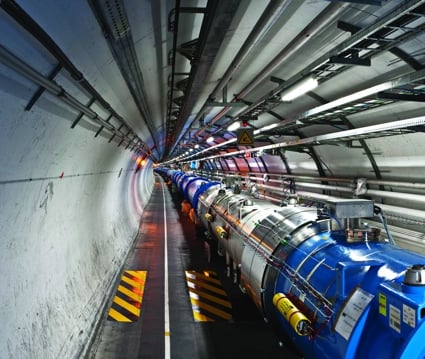
Accelerating science: A tiny part of the LHC’s 27km long ring of superconducting magnets, where particles are whipped up to the speed of light
FROM DARKNESS TO LIGHT?
At the moment that picture is far from full. In fact, mankind only understands what constitutes a fraction of the universe. Our knowledge is based on something particle physicists call the Standard Model, which provides a picture of the particles that we know make up the universe and the forces that act upon them. In 2012, scientists working at the LHC discovered a missing part of the equation that was needed for the Standard Model to work, when data from collisions revealed a new, long-theorized particle called the Higgs boson (necessary to give matter mass). This discovery was significant enough to win the two physicists that postulated it, back in 1964, a long-awaited Nobel Prize for physics. So far, so good. But there’s a problem. A big one. The Standard Model only explains about 5% of the universe. So what about the rest? Enter the new run of the LHC, commencing now. “There’s no easy target with this second run of the LHC (the machine shut down for refurbishments in 2013 after three years in operation). In the first run we were searching for the Higgs, as theoretically we knew it existed, even if it hadn’t been discovered. Now we don’t know what we’re going to discover, but we do have theories,” Schäfer explains. Those theories tend to congregate on the alluring prospect of shedding light on dark matter, which is thought to make up around 27% of everything within the universe that has yet to be observed (dark energy, a cosmic phenomena, is believed to account for the remaining 68%). A principle called super-symmetry, whereby the particles we can see have heavier partners that we can’t, seems to be the favoured way of explaining dark matter and it’s this, the buzz around CERN suggests, that the new LHC experiments may be able to reveal for the very first time. But again, this brings us back to the question, why? If the LHC’s massive underground detectors pinpoint dark matter, what does it mean? How will mankind actually benefit? Dr Sudarshan Paramesvaran, a British particle physicist working in the control centre of CMS, one of the LHC’s four detectors, attempts to provide an answer. “When you’re pushing boundaries to make new
discoveries you can’t possibly know what the benefits will be,” he argues. “First you have to find things, then you understand them, then you find applications. “Look at the discovery of the electron for example (in 1897), the benefits at the time might have been impossible to understand, but now the whole world is run on electronics. That’s a direct result. “What will we find here? New ways of making clean energy, or managing our planet? Who knows, but we do know that it has the potential to move the world forwards, and if we still want to explore and discover then we can’t stand still. “This,” he says, with characteristic CERN passion, “is a path to enlightenment.”
OVER ONE MILLION MAN HOURS WERE USED UPGRADING THE LHC FOR ITS NEW RUN.
ENGINEERING BEYOND IMAGINATION
To access those hidden realms of the universe the LHC needs to operate at full power; as the more power in the beams, the larger the collisions, the smaller the subatomic debris produced and, potentially, the greater the discoveries. In its first run, the accelerator managed to achieve a maximum energy of 8 trillion electron volts (TeV) before shutting down for refurbishment. Now, two years later, the target is 13 TeV (6.5 TeV in each beam), moving up to its designed threshold of 14 TeV in 2016. This staggering leap in energy could only be achieved with a comparably enormous engineering effort, headed by CERN’s 1,033 full time engineers and scientists and 885 technicians. Together they put in well over one million man-hours on a renewal that’s been likened to ‘taking a ship into port and changing every single plank.’ All of the LHC’s 1,232 15m long and 35 tonne superconducting magnets were surveyed 18 were replaced protection systems were added, and the roughly 10,000 electrical interconnections between them consolidated. The cryogenic, vacuum and electronics systems were also improved and strengthened. Lasse Normann, a trained electronics engineer from Narvik in Norway, and CERN stalwart of three decades, explains that the beams have also been configured to produce more collisions increasing the probability of making new discoveries. “This will,” he says, with the air of someone struggling to believe his own words, “produce 900 million collisions per second when the beams are
running at full intensity. That’s a lot of physics, producing a lot of data.” Normann, as with his colleagues, admits to being nervous about the restart not because of a lack of faith in the robust nature and quality of the work, but rather due to a natural sense of caution related to such a complex operation. “This is an enormous, complicated machine, and one that the eyes of the world are trained upon,” he says. “It takes months to actually start it up, and we’ve been waiting two years to do so, so it’s naturally tense, but also incredibly exciting.” The budget behind the LHC refit an eye watering EUR 100million – probably won’t do anything to alleviate that tension.
“FUNDAMENTAL RESEARCH IS THE ONLY WAY FOR MANKIND TO TAKE A BIG LEAP FORWARD, TO MAKE DISCOVERIES AND BEGIN TO REALLY UNDERSTAND THE FULL PICTURE.”
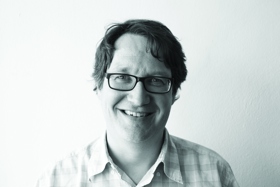
Dr Christoph Schäfer CERN

Inside story: What happens 100m under the Swiss-French border has the power to redefine our understanding of the universe
UNITED IN DISCOVERY
But are the money, the man hours and the resourcesreally important?CERN’s 2,500 staff, 800 contractors and over 11,000 ‘users’ (basically visiting scientists) from more than 100 countries worldwide would argu ‘no’. It’s the passion and the potential that binds them together and drives them on, not the numbers. In the end the biggest thing about the LHC isn’t its colossal scale, or the investment, but the power of this raw human ambition. These people are, more than anyone else, determined to provide mankind with the full picture. When they do that they really will make a big bang impact one that’ll move every one of us.
CERN: European Organization for Nuclear Research
Founded: 1954
Member states: 21
Annual budget (2014): CHF 1billion (c. EUR 970million)
Staff: 2,531 full time, 800 contractors, 587 fellows and apprentices and 11,726 ‘users’
Did you know? The World Wide Web was invented by Tim BernersLee, a British scientist at CERN, in 1989 with the purpose of sharing information between universities and institutes around the world.